Most dogs will suffer from the occasional bout of diarrhea.
If you went around licking the ground, stealing delicious items from the trash can, and raiding the cat’s litter box, your intestines would probably revolt from time to time too.
In an effort to help their pet feel better (and prevent the total destruction of the carpets in their home), some owners wonder if they can give Imodium to their diarrheal dog.
Unfortunately, there is no quick-and-easy answer to this question. Imodium is safe for some dogs, but it should never be given to others.
Accordingly, you’ll always want to contact your vet before administering Imodium to your dog.
Below, we’ll talk a little more about the use of Imodium in dogs, explain what you’ll want to do anytime your dog starts suffering from diarrhea, and discuss some of the other things you may be able to do to give your dog some relief.
Key Takeaways: Can I Give My Dog Imodium?
- You must always contact your vet before giving your dog Imodium. Imodium is a safe medication for some dogs, but it can be lethal for others.
- There are five basic groups of dogs who should not take Imodium. This includes dogs who’ve eaten something toxic, those who’re battling an intestinal infection, pooches suffering from several different health problems, herding breeds, or canines currently taking some other medications.
- There are a few alternatives to Imodium you may be able to use to ease your pet’s diarrhea (after consulting your vet). Pumpkin puree and white rice are often helpful and safe for most doggos, and Pepto Bismol is even appropriate in some cases.
What Is Imodium and How Does It Work?
Imodium is one of those medications that was originally developed for one purpose, but it ultimately proved much more effective for treating an entirely different problem.
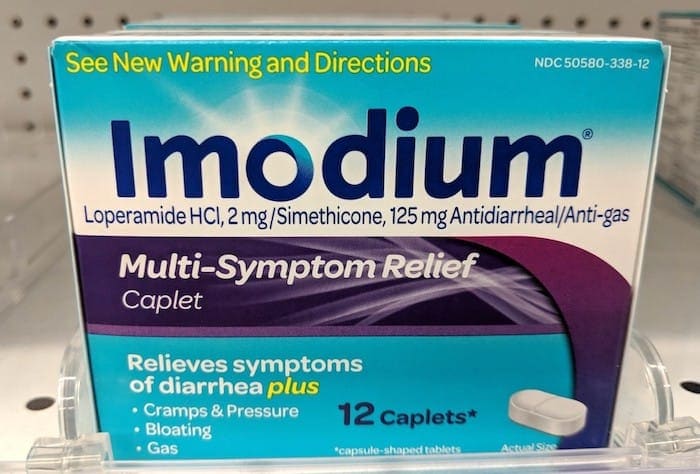
Imodium is a synthetic opioid called loperamide, which was initially intended to be used for the management of pain.
Unfortunately, it didn’t turn out to be effective for this purpose. It must be administered in very high dosages to provide pain relief – dosages that are not safe for most people.
However, like most other opioids (including synthetic and natural varieties), Imodium often causes constipation. This is normally considered a troubling side effect of opioids, but it actually becomes a feature rather than a bug in the case of Imodium.
So, Imodium is now used to help slow intestinal function in humans. In the dosages it is typically administered, it doesn’t provide any type of pain relief.
Is Imodium Safe for Dogs?
Imodium is considered relatively safe for some dogs, but it can be quite dangerous – even deadly – for others. This is part of the reason it is imperative that you contact your vet before giving Imodium to your pet.
If you cannot reach your normal veterinarian, get in touch with an online vet via JustAnswer and get their opinion on the matter.
Nevertheless, most vets consider Imodium safe for dogs who do not fall into one of the following five groups:
1. Dogs Who Have Eaten Something Toxic
Diarrhea is one of the body’s ways of flushing out (apologies for the pun) toxic or otherwise harmful substances. Accordingly, you don’t want to slow this process down if your dog has eaten something that may put him in danger.
2. Dogs Who Are Suffering from a Serious Intestinal Infection
Be sure to avoid administering Imodium to dogs who are suffering from a bacterial infection that is affecting his intestines.
As with toxic foods, you’ll want to let your dog’s body expel as much of the bacteria as possible. Your vet will likely prescribe a medication to help your pup eliminate the infection.
3. Dogs Who Are Experiencing Additional Health Problems
Imodium is not always safe for dogs suffering from other serious health problems, such as kidney disease, liver disease, Addison’s disease, inflammatory bowel disease, or hypothyroidism.
Additionally, you don’t want to give Imodium to dogs currently experiencing difficulty breathing or stomach pain, or those who have suffered a recent head wound.
4. Herding Breeds
Shelties, Australian shepherds, border collies, and other herding breeds often have a gene mutation (called MDR1) that makes it difficult for their bodies to process Imodium and a few other medications.
Not all individuals in this group have the gene, but the only way to know for sure is by having a genetic test performed (the good news is that you can have this test performed easily via a dog DNA test kit).
So, unless you know for sure that your herding dog does not have this gene mutation, avoid giving him Imodium.
5. Dogs Who Are Already Taking Some Other Medications
Some medications can interact with Imodium in potentially dangerous ways. This can include antihistamines and other medicines that cause sedation, as well as monoamine oxidase inhibitors (MAOIs).
Just make sure that you mention any medications your dog is taking to your vet when inquiring about the suitability of Imodium.
What Is the Typical Recommended Imodium Dosage for Dogs?
Different veterinarians recommend different Imodium dosages for different dogs – this is part of the reason it is so important to discuss the use of the medication with your vet before giving it to your dog.
However, the average dosage is probably in the neighborhood of 0.1 milligrams of Imodium for every kilogram of your dog’s body weight. This dosage is typically administered every 12 hours.
The first thing most owners will need to do is to convert their dog’s weight in pounds to kilograms. Don’t worry, this is pretty easy; just divide your dog’s weight by 2.2 to get a close approximation of his weight in kilograms. So, a 10-pound dog weighs approximately 4.5 kilograms. This means such a dog would need about 0.45 milligrams of Imodium.
The problem is that Imodium typically comes in 2-milligram tablets, and it can be difficult to break them in such precise ways. Accordingly, it is usually easier (and much safer) to use liquid versions of Imodium for small dogs.
Just be sure to check the label first, as some liquid medications contain xylitol or other artificial sweeteners, which are very dangerous for dogs.
It’s a bit easier to use the tablets for larger dogs. Canines who weigh 50 pounds require about 2 milligrams of Imodium, so you could simply give dogs of this size a single tablet.
Note that Imodium should not be administered for more than five days at a time unless your vet specifically instructs you to do so.
What Are the Side Effects of Imodium for Dogs?
Just about every medication is capable of causing side effects, and Imodium is no different. Most of the common side effects it can cause are mild, but some are pretty troubling.
A few of the most notable side effects of Imodium include:
- Digestive issues, including flatulence, loose stools, and constipation
- Lethargy
- Central nervous system depression
- Pancreatitis
- Toxic megacolon (a complication of inflammatory bowel disease)
Contact your vet at once if you note any of these issues after giving your dog Imodium.
The Big Question: When Do You Call the Vet and When Do You Try to Treat Diarrhea at Home?
Most dogs will get over a bout of diarrhea pretty quickly and start pooping normally again. But sometimes, diarrhea can signal a serious health problem.
This means you’ll need to exercise discretion when deciding how to treat your dog’s intestinal issues.
It’s always wise to contact your vet anytime you are worried about your dog’s health, but if you pick up the phone every time your dog has a less-than-ideal poop, your vet is going to start ducking your calls.
So, you’ll want to consider a few factors when deciding whether or not you should call the vet.
- How long has your dog been suffering from diarrhea? Recommendations about how long you should wait to contact your vet vary. Some authorities recommend contacting your vet anytime diarrhea lasts longer than 24 hours, while others suggest that you could wait 48 to 72 hours or more before you need to pick up the phone. K9 of Mine’s veterinary consultant recommends basing your decision on the severity of the diarrhea; the more severe the symptoms, the more quickly you should seek veterinary attention.
- How severe is the diarrhea? If your dog is pooping every 10 minutes, or you note any blood in his stool, you’ll want to give your vet a call. On the other hand, a dog who only has a few loose or watery poops and otherwise acts normally probably doesn’t need immediate veterinary attention.
- Has your dog eaten anything unusual or potentially dangerous? If your dog steals half of your burger and then suffers from diarrhea 6 or 12 hours later, he’ll probably be fine — the dietary indiscretion is likely the cause of the problem. On the other hand, you’ll want to obtain immediate veterinary assistance if your dog has eaten something toxic, such as poisonous plants or dangerous chemicals.
- Is your dog suffering from any other symptoms? If your dog is acting pretty normal (except for the frequent squatting) and isn’t exhibiting any other symptoms, you can probably take a wait-and-see approach. But if your dog is also vomiting, showing signs of abdominal pain, running a fever, or doing anything else unusual, you’ll want to call your vet at once.
- Is your dog still drinking water? One of the primary dangers that diarrhea presents is dehydration. Simply put, if your dog does not appear to be replenishing the fluids he’s losing, it’s wise to contact your vet and follow the advice provided. It is pretty easy for your vet to rehydrate your dog with IV fluids, but there’s not much you can do at home to treat dehydration. To paraphrase the old adage: You can fill your dog’s water bowl, but you can’t make him drink.
- Is your dog in a high-risk category? If your dog is a healthy adult, you can take comfort in the knowledge that his body will normally be strong enough to withstand a mild case of diarrhea. However, dogs who are very old, very young, underweight, or already dealing with an existing illness may become very sick from even a mild bout. So, if your dog is in a high-risk group, it’s probably a good idea to err on the side of caution and pick up the phone.
- Have you recently changed foods? Sometimes, dogs will experience diarrhea following a rapid change in food. This is usually no cause for concern, and his body will likely adapt to the new food over time. To help avoid this problem, always transition from one food to another over the course of several days by mixing in increasing amounts of the new food with his old food.
As mentioned earlier, you can also always consult an online vet to discuss your dog’s diarrhea through the JustAnwer service, where they’ll put you in direct contact with a veterinarian you can chat with.
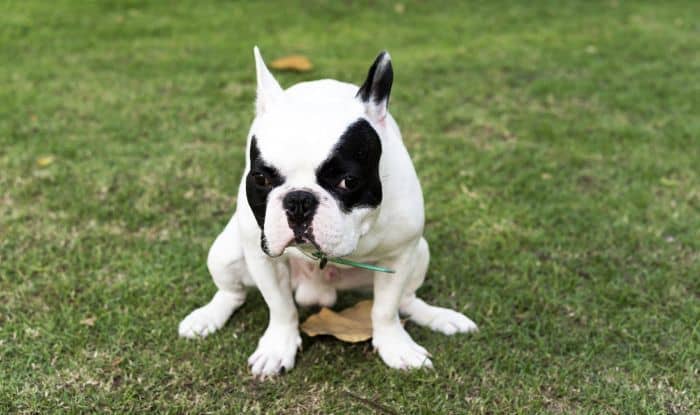
Basic Dog Diarrhea Treatment
If you have decided to treat your dog’s diarrhea at home, or you are still in the wait-and-see stage and you haven’t yet called your vet, there are a couple of things you should do.
First of all, you’ll want to withhold food from your dog for about 12 to 24 hours to let his system rest and recuperate. As long as your dog is an otherwise healthy adult, a fast of this length shouldn’t cause him much discomfort, and it’ll help accelerate the recovery process.
Try to encourage your dog to drink plenty of water. If your dog isn’t an enthusiastic drinker, you may want to give him a few ice cubes to chew. It may be helpful to give him some water that has been used to cook rice or chicken, as this may provide a bit more flavor and encourage him to lap it up like soup.
Take your dog outside frequently so he can go ahead and clear out his digestive tract. This will also help him feel better more quickly than if he has to “hold it” for long periods of time.
About 12 to 24 hours after the diarrhea appears to have subsided, start feeding your dog again. However, don’t just fill up his food dish and let him stuff himself. Instead, you’ll want to give him several very small meals comprised of bland food (boiled or baked chicken and white rice) over the course of one to three days to let his intestines recover gradually.
It’s also worth considering if any long-term changes to your dog’s diet need to be made. If diarrhea is a regular problem for your pooch, talk it over with your vet and consider switching to a dog food designed for dogs with sensitive stomachs, a dog food designed to produce firmer stools, or a dog food that’s good for treating diarrhea. You can also discuss switching your dog to a different medication or other supplements (if he’s taking anything)
Are There Any Good Dog-Friendly Alternatives to Imodium?
Imodium isn’t a good choice for all dogs, but fortunately, there are a few other things you can give your dog to help resolve his diarrhea. Some of the most effective options include:
1. Pumpkin Puree
I’ve said it before, and I’ll say it again: Every dog owner should have a can of pumpkin puree in their pantry.
Pumpkin is great for dogs. It’s full of soluble and insoluble fiber (not to mention vitamins, minerals, and antioxidants), which will help absorb water from your dog’s colon and bulk up his stools. This will usually put an end to his diarrhea pretty quickly.
You don’t need to give him a ton of pumpkin puree — small dogs probably need about a teaspoon or two, while big dogs may need a couple of tablespoons. Feed him small amounts of pumpkin puree two or three times per day until his poops start looking normal again.
You can just let your dog lick it from the spoon if he’s willing to do so, or you can mix it in with his meals (once you resume feeding him). Many dogs love the taste of pumpkin, but others aren’t crazy about it. Just start by mixing in a very small quantity with your dog’s normal food, and gradually increase the amount offered over time.
Note that we’re talking about pumpkin puree – not pumpkin pie filling. These products are often sold side-by-side in the grocery store, and while the former is fantastic for treating doggie diarrhea, the latter is full of sugar and other additives, which may worsen your dog’s condition.
2. Pepto Bismol
Pepto Bismol is another option for many dogs suffering from diarrhea.
However, it can cause problems for dogs taking some medications (such as anti-inflammatory medicines), as well as those experiencing some health problems (such as stomach or intestinal bleeding). So, you’ll want to consult your vet before administering it to your dog.
Pepto Bismol for dogs is usually administered at a rate of 1 teaspoon for every 10 pounds of body weight, and it is usually given every 6 hours or so. However, it should not be used over the long term.
If two or three doses don’t put a stop to your dog’s diarrhea, you’ll need to stop administering it to your dog and head to the vet.
3. White Rice
Boiled white rice is helpful for treating diarrhea in some dogs, and is one of the best things to feed a dog with an upset stomach.
White rice is easy for dogs to digest, and it is a “low-residue” food, which means that most of the rice is digested and only a small portion of it is converted into poop.
It’s also a bland source of carbs and calories, which will help keep your dog nourished while dealing with diarrhea.
Just give your dog about ¼ to 1 cup (depending on his size) two or three times per day until he’s ready to go back to regular food.
Imodium can be helpful for treating diarrhea in some dogs, but it isn’t a medication to take lightly. So, be sure to call your vet before administering it to your dog and be sure to measure the dosage carefully.
Have you ever used Imodium or one of the other treatments discussed above to calm your pet’s troubled tummy? How did it work out? Let us know in the comments below!
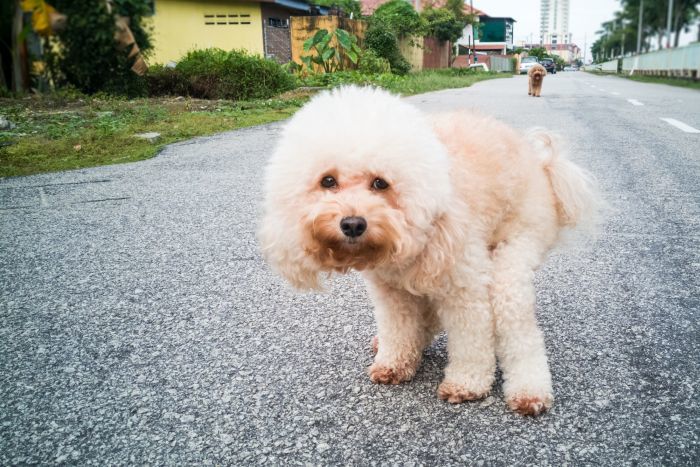




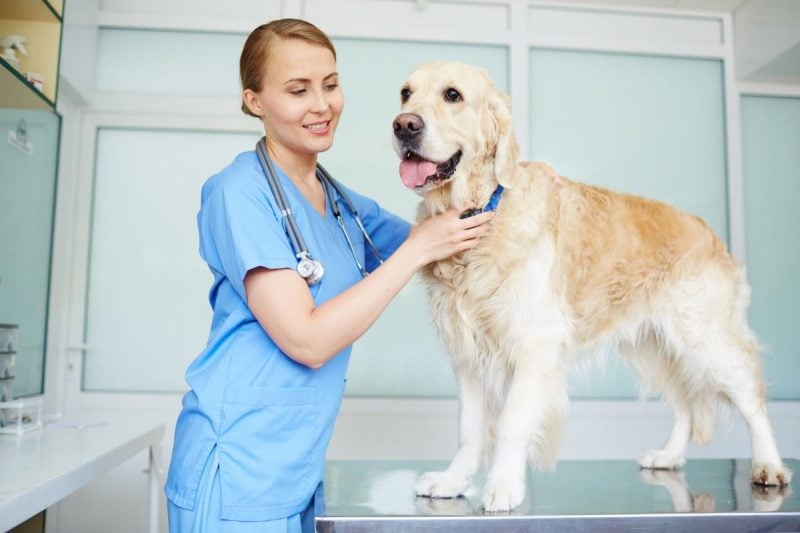
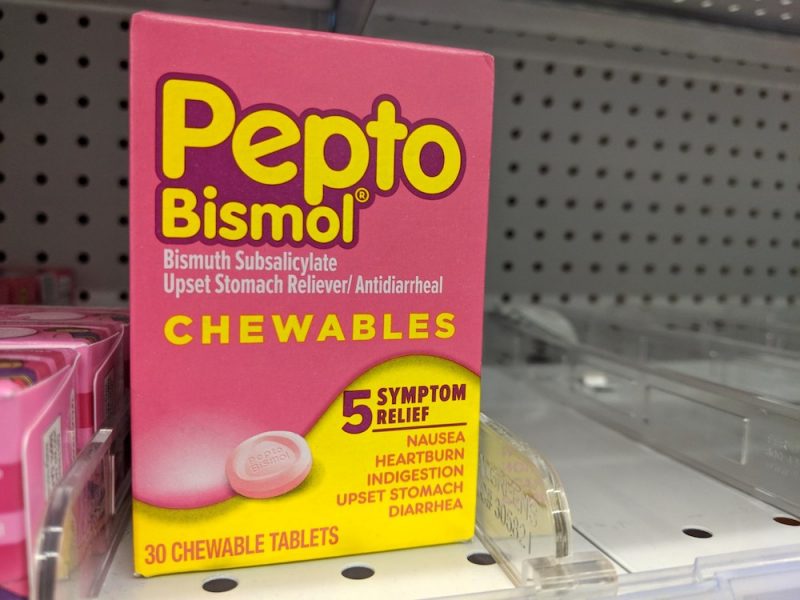


Leave a Comment